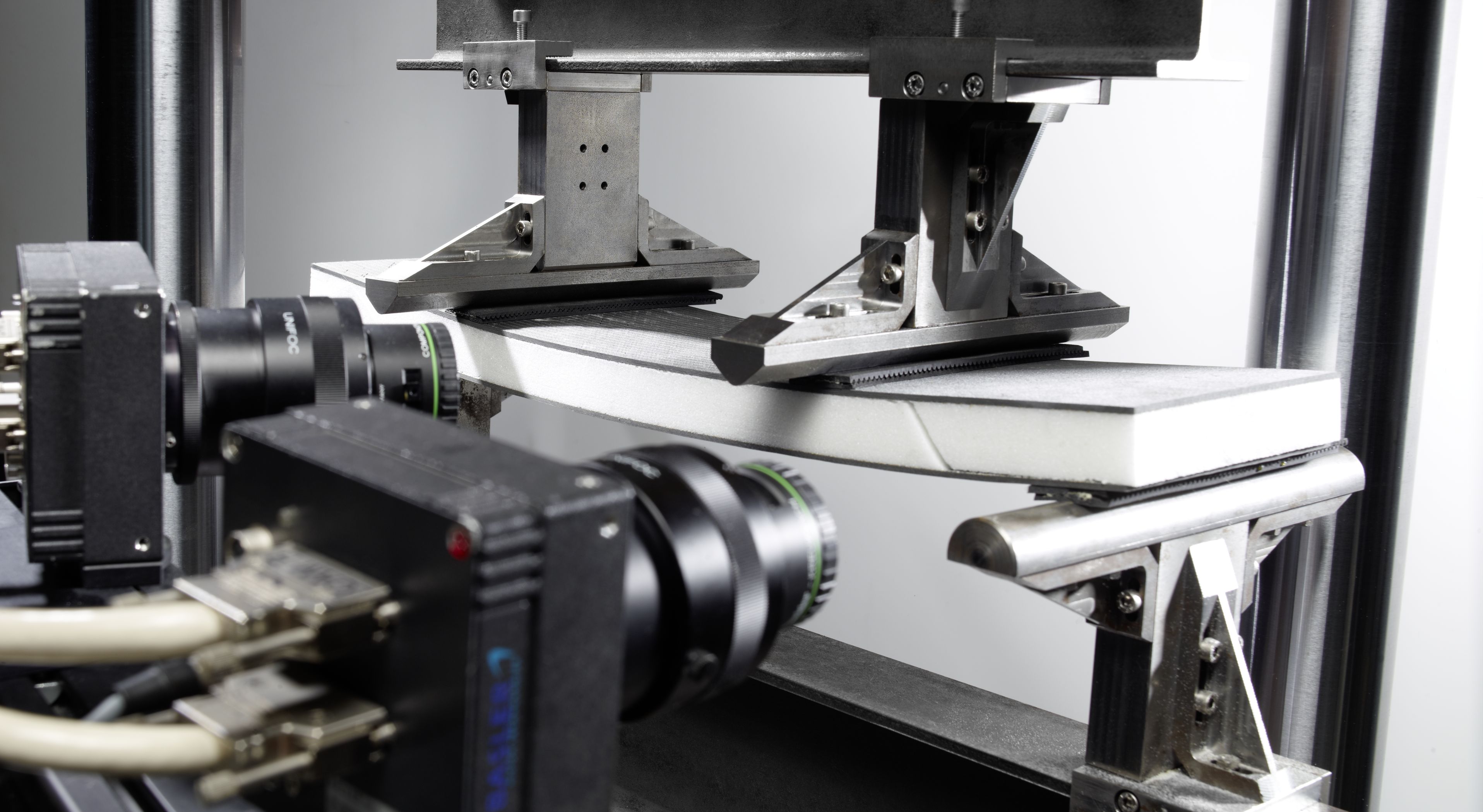Lightweight construction for aviation: Fraunhofer IMWS checks safe application of new materials
Lightweight construction is a decisive key in aviation to save fuel and thus emissions. Can sandwich components reinforced with carbon fibers be used for the load-bearing structures of an aircraft? This question is considered by Dr. Ralf Schlimper of the Fraunhofer Institute for Microstructure of Materials and Systems IMWS in a talk at the »Innovative aviation – polymer meets aviation« conference on 31 May as part of the Berlin Air Show.
The aviation industry has set itself the target for the year 2050 of reducing its carbon dioxide emissions by 75 percent and nitrogen oxide emissions by 90 percent compared to the values in 2000. Each kilogram by which an aircraft becomes lighter helps to achieve this target. Carbon fiber reinforced polymer (CFRP) is especially attractive for lightweight construction: The material combines a high strength with low weight.
»In CFRP components the carbon fibers are embedded in a resin matrix, so that a very high strength and stiffness is achieved«, explained Dr. Ralf Schlimper, who heads the »Fiber Composite Structures« Group in the Fraunhofer IMWS. CFRP components are either made as monolithic construction, in which several fiber-reinforced layers are laminated on top of each other, or by sandwich construction in which a supporting core made of honeycomb or foam is enclosed by fiber reinforced cover layers or plies.
In the load-bearing, safety-relevant structures of the aircraft, CFRP components have to date mainly be used as monolithic construction. If CFRP foam sandwich elements could be used there too, a further weight saving of around 10 percent would be possible. In addition, the efficiency of the production would increase again. Yet before this becomes possible, the safety of the material must naturally be verified.
With its expertise in microstructure elucidation, the Fraunhofer IMWS is a sought-after partner of industry. For example, it has had an intensive cooperation with Airbus since 2005. In a current project the Institute, together with Airbus, the Faserinstitut (Fiber Institute) Bremen, the Deutschen Luft- und Raumfahrtzentrum (German Aerospace Centre) Stuttgart, EADS Innovation Works and Lufthansa Engineering, is researching into the possible uses of carbon fiber reinforced polymers.
The results to date will be presented by Dr Schlimper in a talk on the »Safe use of CFRP foam sandwich in the aircraft primary structure« at the »Innovative aviation – polymer meets aviation« conference to be held for the first time on 31 May in the Centre for Aerospace in Wildau. The conference will jointly held by the Fraunhofer IMWS and is embedded in the program of the Berlin Air Show.
»Aerospace depends on high-performance materials, in which reliability is paramount. We contribute to this by not only determining the damage tolerance of components, but also by developing methods for evaluating new materials«, said Schlimper.
Attendance of the conference is free of charge.
